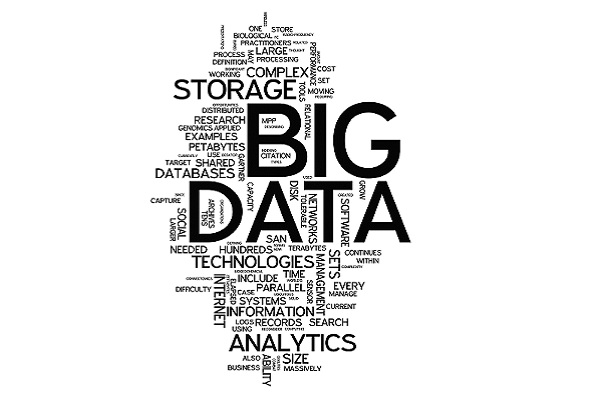Coping with the data deluge
Whether you're talking Big Data, small data, fast data or slow data, business and tech leaders must start to change their thinking, according to Mark Samuels.


Delegates at last month's Tucon conference, organised by information specialist Tibco in Las Vegas, were presented with one simple conclusion: while the amount of information continues to increase, senior executives are not necessarily findings ways to cope and a large amount of education around business processes is still required.
Big Data sounds like a bomb looking for a war... Work with a common language and explain how the journey might take longer, in terms of governance, than the business might expect.
Creating a coping strategy for the information explosion is tough, especially as the phrase Big Data remains a significant part of the problem. Executives, both from the IT department and from across other lines of business, attending the event, recognised the term is loaded. Take Sandeep Dadlani, vice president at Infosys, who said most CIOs do not like to use the phrase.
"Big Data sounds like a bomb looking for a war," he said. Instead, Dadlani advised CIOs to keep things simple and to find a use case the business can understand. "Work with a common language and explain how the journey might take longer, in terms of governance, than the business might expect," he said.
The Tucon conference highlighted how a number of senior executives have already made a step in the right direction. Take Rob Friel, CEO at healthcare specialist Perkin Elmer, whose organisation uses information to help drive cutting-edge research in crucial areas such as newborn baby screening.
Friel and his IT colleagues are working to create a self-service model for business intelligence that allows scientists, as the business' end users, to analyse information in real-time. "That's why I'm excited by analytics, because we can make real advancements and change health for the better. Prevention has to be better than the cure," he said.
Other examples of senior executives pushing forward in regards to data analytics included Rick Welts, president and chief operating officer of NBA team Golden State Warriors. Welts said business intelligence has a significant impact on the sporting organisation, both within the business and on the field of play. The franchise uses cameras and analytics to capture every player movement. The technology is used to create reports for coaches as they tweak player performance.
Get the ITPro daily newsletter
Sign up today and you will receive a free copy of our Future Focus 2025 report - the leading guidance on AI, cybersecurity and other IT challenges as per 700+ senior executives
"We're really just at the beginning," said Welts, who also explained how analytic information is helping to boost customer engagement. The NBA team has developed a mobile app alongside Tibco that provides real-time statistics for fans. The system also allows supporters to upgrade their ticket if an opportunity arises, and to order food and drinks from their seats at the venue.
"You have to connect and engage with your customers," said Welts. "As a sporting institution, we can never afford to take our support for granted."
Chris Nordling, CIO at MGM Resorts, agreed that modern IT leaders must be creative in terms of customer engagement. His organisation builds individual digital personas for each customer, be that someone who spends a dollar gambling on fruit machines or business high rollers who have millions to invest. The firm uses Tibco technology to understand client preferences.
"Technology is integral to helping the customer come first," said Nordling. "Unless you can see the problem in real-time, you don't really know what you're trying to fix."
Not all businesses, however, have made rapid progress towards the digital future. Raj Verma, chief marketing officer at Tibco, said some CIOs are failing to fully embrace consumerisation. IT leaders, in such circumstances, are often hamstrung by their firm's connection to the past.
"That legacy includes your information, your business models and the way you marry new ways of working with old technology," said Verma. "If you can't deal with your legacy concerns, you can't deal with the advent of consumer-led forces that are helping to shape the future of enterprise IT."
One explanation for a slow response from CIOs to new digital IT, said Kris Duggan, founder and chief executive of gamification specialist Badgeville, is that IT leaders have predominantly focused on cost savings for the past five years. Now, however, CIOs have an opportunity to be a hero and to drive horizontal connections across the business.
IT leaders must use new forms of innovative, social technology to increase connectivity. But, like Verma, Duggan said engrained ways of working present a challenge. "How do you inspire knowledge workers to operate in an open and collaborative space, rather than using closed systems like email?" he asked. "Increasing collaboration is all about getting the right behaviour and giving people the incentive to change the way they work."
Fabrice Pizzi, chief information security specialist for construction firm Eiffage, agreed that education is absolutely crucial. "Big Data creates an increased number of security issues," he said.
"For reporting to improve, the business needs to know what will be the next event. Organisations need to catch more information and they need more people to be able to analyse the knowledge that is emerging."
Undertaking such high levels of investigation will not be straightforward. Nicola Morini Bianzino, global innovation lead at Accenture, says technology can now, for the first time, complete more thorough data analysis than human beings. The shift towards automation creates concerns for CIOs, because their teams do not necessarily have the skills to deal with the transformation or the associated increase in data volume.
Like other IT experts at Tucon, Bianzino believed a significant focus on education is required. Executives need to understand how they can really take advantage of big data within the context of their own organisation. And, for most firms, fast data is more important than Big Data.
"You need a good, representative subset of data and you need that information quickly, so you can complete a feedback loop to the lines of business," he said. "Trying to get petabytes of information into a database is not really the point. The organisation can do things now but it doesn't necessarily know how to get there."
CIOs, therefore, must find ways to push key facts and figures around the organisation. The end point could be smarter, more responsive organisations but more education around business processes will be crucial. "It would be nice to have business processes that, when something happens in one area, the event automatically triggers a response elsewhere. The technology is there but we need to convince people to change their business processes," said Bianzino.

Mark Samuels is a freelance writer specializing in business and technology. For the past two decades, he has produced extensive work on subjects such as the adoption of technology by C-suite executives.
At ITPro, Mark has provided long-form content on C-suite strategy, particularly relating to chief information officers (CIOs), as well as digital transformation case studies, and explainers on cloud computing architecture.
Mark has written for publications including Computing, The Guardian, ZDNet, TechRepublic, Times Higher Education, and CIONET.
Before his career in journalism, Mark achieved a BA in geography and MSc in World Space Economy at the University of Birmingham, as well as a PhD in economic geography at the University of Sheffield.
-
 Asus ZenScreen Fold OLED MQ17QH review
Asus ZenScreen Fold OLED MQ17QH reviewReviews A stunning foldable 17.3in OLED display – but it's too expensive to be anything more than a thrilling tech demo
By Sasha Muller
-
 How the UK MoJ achieved secure networks for prisons and offices with Palo Alto Networks
How the UK MoJ achieved secure networks for prisons and offices with Palo Alto NetworksCase study Adopting zero trust is a necessity when your own users are trying to launch cyber attacks
By Rory Bathgate